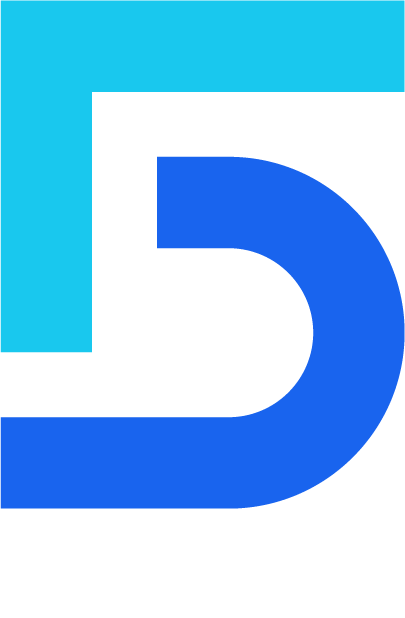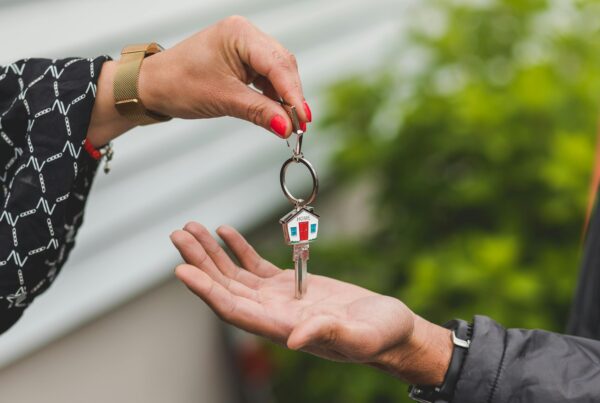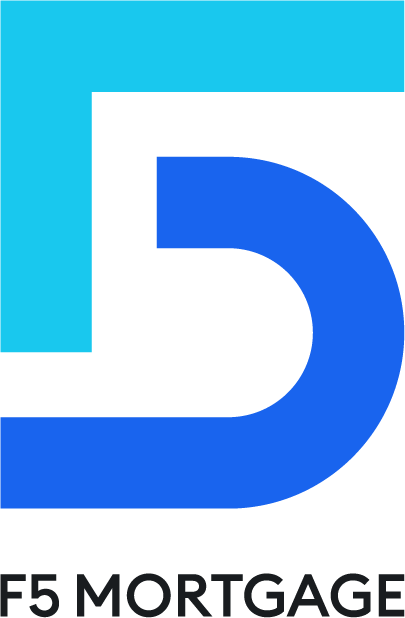First-time homebuyers already have plenty of obstacles to overcome, and paying PMI seems like another burden on their budget. This article will discuss mortgage insurance, how it works for conventional and unconventional loans, and the different ways to avoid paying for it.
What Is Private Mortgage Insurance (PMI)?
Private Mortgage Insurance (PMI) is a type of insurance lenders require from borrowers who make a down payment of less than 20%. PMI protects the lender in case the borrower defaults on their mortgage payments.
It enables borrowers to obtain a mortgage with a low down payment, making homeownership more accessible to those without substantial savings for a larger down payment. However, PMI is an additional cost to the monthly mortgage payment, which the borrower pays until they have 20% equity in the home.
Why Do Lenders Require PMI?
Lenders require PMI primarily to mitigate the risk associated with loans where the borrower’s down payment is less than 20% of the home’s purchase price. Private mortgage insurance provides another layer of protection for the mortgage lender, covering a portion of the balance if the borrower defaults.
Fannie Mae and Freddie Mac require PMI on mortgage loans with a higher loan-to-value ratio. Otherwise, they won’t purchase or guarantee the loan. Lenders then require PMI to protect themselves from losing money (and to comply with industry standards).
In short, PMI makes it less risky for the lender to accept a low down payment because it can sell the loan on the secondary mortgage market, free up capital, and stay liquid.
The Cost of PMI
The cost of PMI varies depending on the down payment size, the loan amount, the borrower’s credit score, and the insurer’s rate. Typically, PMI costs between 0.5% and 1.5% of the total loan amount per year. For example, if you have a $200,000 mortgage and your PMI rate is 0.5%, you might pay around $1,000 per year for PMI ($200,000 x 0.005).
When it comes to monthly payments, you can expect to pay between $30 and $70 for every $100,000 borrowed. However, PMI rates and costs vary widely, so it’s key to consult with your lender or insurance provider for specific quotes.
Strategies to Avoid PMI
As a first-time homebuyer, you can avoid PMI on conventional mortgages in several ways. These include a 20% down payment, piggyback loans, lender-paid PMI, and exploring government mortgage programs that don’t have PMI but may require another type of mortgage insurance.
-
Reach the 20% Down Payment
You can avoid PMI on practically every type of loan if you pay 20% down. Conventional loans without PMI typically include fixed-rate mortgages, adjustable-rate mortgages (ARMs), and jumbo loans. However, for many prospective homeowners, this is not a financial option.
Another option is to look at how fast the property you want to buy could appreciate. The faster your home grows in value, the quicker you will reach the 80% LTV. However, lenders may require a valuation, which the borrower must pay.
Before you choose a home loan type, calculate your budget and speak to a professional about different loan programs to find the best program for your long-term financial health.
-
Piggyback Loan
Another way first-time homebuyers can avoid PMI is to obtain a piggyback loan. A piggyback loan refers to taking out two mortgages on the same home. This is how it works:
You obtain one mortgage and another mortgage (a home equity loan or a HELOC) at the same time. There are two common types, the 80-10-10 and the 80-15-5. In the initial case, the first mortgage covers 80% of the home’s purchase price, the second loan covers 10%, and you make a down payment of another 10%.
This brings your down payment total to 20% and eliminates the need for PMI. However, this strategy includes additional costs for taking out another home loan.
-
Lender-Paid Mortgage Insurance (LPMI)
Lender-paid mortgage insurance is an alternative to borrower-paid private mortgage insurance, in which the lender pays the insurance mortgage premium. This type of arrangement involves the lender factoring the insurance cost into the overall cost of the loan so the borrower doesn’t have to pay it separately. Instead, it is spread over the entire life of the loan.
You can negotiate this insurance with your lender, and it is useful for reducing your administrative burden. However, it results in a slightly higher interest rate, so your monthly mortgage payment still increases.
Government Loan Programs
Another way to avoid PMI is to get a government-backed loan or increase your down payment to 20% by applying for down payment assistance programs (which are also available for conventional, non-government-backed loans).
If your savings don’t allow it, you may also qualify for government loans, which do not require a sizable (or any) down payment. You can use a down payment assistance program with any of these.
-
FHA Loan
These loans are insured by the Federal Housing Administration (FHA), so their requirements aren’t as strict as for other loans. You can get an adjustable-rate mortgage or a fixed-rate mortgage with terms of 15 or 30 years.
People with a steady employment history who are buying a primary residence qualify for FHA loans, regardless of their income or savings. With a good credit score, FHA loans also let you purchase a home with a 3.5% down payment. However, you still need to pay mortgage insurance premiums (not PMI), which consist of an upfront payment and annual premiums.
-
VA Loan
VA loans are reserved for active-duty military personnel, veterans with minimum service requirements, and surviving spouses. The Department of Veterans Affairs insures VA loans and requires no minimum down payment. However, a VA loan has strict requirements, including a debt-to-income ratio of 41% or less and a minimum credit score of 620.
These no-PMI loans are reserved for primary residences. Also, while there is no PMI requirement, all borrowers must pay a one-time VA funding fee.
-
U.S. Department of Agriculture (USDA) Loan
The USDA Rural Development Guaranteed Housing Loan Program backs a USDA loan. It enables first-time buyers in rural areas (USDA-approved) to purchase a home with no down payment requirement.
USDA loans don’t have PMI, but they have their own unique mortgage insurance, which consists of a 1% upfront guarantee fee and a 0.35% annual fee. These home loans suit people with low-to-moderate income, and they enable borrowers to pay a low, fixed interest rate.
Qualifying for a No-PMI Mortgage
If you don’t want to pay PMI, there are some ways to avoid it or reduce its impact on your monthly payment. By following these guidelines, you will qualify for better terms and improve your financial health.
-
Building a Strong Credit Score
Credit scores are one of the top factors insurers look at when deciding how much to charge for PMI. If you want lower monthly payments, it pays to improve your credit, as borrowers with excellent credit histories may pay up to three times less in PMI compared to borrowers with fair credit scores for the same LTV and loan amount. For a conventional loan, the usual minimum score is 620.
-
Maintaining a Healthy Debt-to-Income (DTI) Ratio
Your monthly mortgage payment and PMI rate depend on your DTI ratio. The more of your income you spend on paying debts, the higher the perceived risk for lenders and insurers. A healthy DTI is between 35% (anything under is seen as excellent) and 43%. However, as DTI affects everything from PMI to interest rates, keeping it as low as possible is essential.
-
Saving for Closing Costs and a Down Payment
A lower down payment will mean higher mortgage rates and more expensive mortgage insurance. Work on your savings, find down payment assistance programs, or see if family members can help you with a gift fund. The sooner you reach 20%, the sooner you can get rid of PMI. A good savings strategy will lower monthly payments, reduce overall loan costs, and improve long-term financial stability.
-
Number of Borrowers on Your Loan Application
Another factor determining your monthly payment is the number of borrowers on your application. Lenders and insurers will be more comfortable knowing more than one person is responsible for making the payments, reducing the risk of default.
Benefits of a No-PMI Strategy
Although PMI can help first-time homebuyers obtain a home loan with a smaller down payment, there are some benefits to adopting a no-PMI strategy.
-
Cost
PMI costs between 0.5% and 1.5% of the loan amount annually. For example, at a 1% rate, you could pay $3,000 a year for a $300,000 loan or an additional $250 a month. Assuming you pay PMI for five years, it’s a $15,000 expense.
If you invested or saved this money, it could give you a significant financial boost. For example, if you put it in a savings account with a 5% interest rate, you would end up with $17,272 after five years.
-
Not Easy to Cancel
Canceling PMI is not as easy as hitting 20% equity. It is not automatically canceled until you reach 22%. With many lenders, you must submit a formal request to cancel PMI, which may require another appraisal.
Until all that is completed, you still need to make monthly mortgage payments, including the insurance payment. It isn’t easy with FHA loans either, as they may require a refinance to remove mortgage insurance premiums.
-
PMI Is Not Tax-Deductible
Unlike mortgage interest, which is deductible, private mortgage insurance isn’t. While it was possible during the early pandemic, now there is no way to soften the blow of additional mortgage payments by writing them off your taxes.
So unlike paying for the principal, which increases your equity, or mortgage interest, which is at least tax-deductible, private mortgage insurance doesn’t offer any benefits to you. Instead, you are paying it to protect the lender.
Additional Tips for First-Time Home Buyers
Other ways first-time buyers can save money when purchasing a home include getting pre-qualified, making calculations in advance, and performing a home inspection.
-
Get Pre-Qualified for a Mortgage
Applying for mortgage loans can take time. By getting pre-qualified for a loan, you can learn how much you can afford to borrow and what your payments may look like. It also helps you compare when you shop for lenders and narrow your home search by giving you a clear idea of your budget.
Moreover, it demonstrates you are a serious buyer, increasing your chances of sealing the deal. Finally, it can speed up the closing process once you find a home, as much of the paperwork and verification have already been completed.
-
Factor In Closing Costs
On average, closing fees range between 2% and 5% of the total loan balance. These costs include fees for services such as appraisals, title searches, inspections, and legal paperwork. There may also be prepaid expenses like property taxes and homeowners insurance due at closing.
For example, if you’re taking out a $300,000 loan and your closing fees are 3%, you must pay an additional $9,000 at closing. Investigating closing fees is crucial to ensure you have enough funds to complete the transaction smoothly.
-
Home Inspection Importance
A home inspection is a thorough examination of a property’s condition conducted by a certified inspector. It involves inspecting the structural components, electrical systems, plumbing, heating, and air conditioning systems, and other aspects of the home to identify any issues or potential problems.
It provides valuable information about the property to you as the buyer, helping you decide whether to proceed with the purchase, negotiate repairs or credits, or even walk away. It’s important to the lender as it ensures the property is in good condition and that their investment is protected.
Ready to Buy Your First Home?
Whether you want an adjustable-rate or a fixed-rate mortgage, a conventional or a government loan, F5 Mortgage can help you become a first-time homeowner. We are an independent broker that works for you, not the lenders, and we bring down your costs by using software that helps you find the right mortgage. Contact us if you want to discuss your options, and we’ll make the home-buying process easier.








